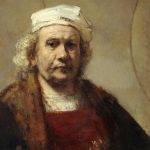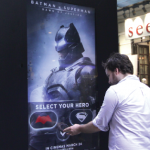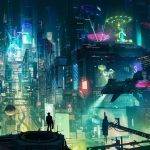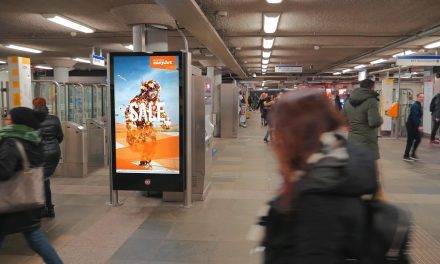 Almost daily I am asked how I deal with the rapid ICT developments and digitalization of our world. Surprisingly, the answer lies in the past instead of the future. Get on board and follow my ‘learnings’ via this quote from writer and philosopher George Santayana (1863-1952): ‘Those who cannot remember the past are condemned to repeat it.’ And that is what we do more often and faster than you think.
Almost daily I am asked how I deal with the rapid ICT developments and digitalization of our world. Surprisingly, the answer lies in the past instead of the future. Get on board and follow my ‘learnings’ via this quote from writer and philosopher George Santayana (1863-1952): ‘Those who cannot remember the past are condemned to repeat it.’ And that is what we do more often and faster than you think.
Evolution
Following the arrival of the printing press, monks started to feel completely redundant. This is how we sometimes seem to feel in this ultra-modern world. Progress has its disadvantages, but certainly also its advantages. My line of argument is that the modern ‘Connected World’ started much earlier than we think, in fact in 1860. when the steamer replaced the sailing ship. Not being dependent on the wind was not the greatest gain. From then on we could forecast precisely when a ship would arrive somewhere. This was the start of globalization. Time tables were created that fundamentally changed our view on collaborating, producing, governing, living and innovating. From then on we could ensure a better match of supply and demand.
The evolution continued. From horse to iron horse, from the car, train and letter to telephone, email and WhatsApp. All transitions have something in common, namely transport, logistics and communication. These are techniques people use to bridge distance and thus time, of which we all feel we have less and less. The next exceptional revolution is currently transforming our world: real-time wireless connections with devices in combination with data on behaviour and environment. From Connected Cars to personal wearables and smart electrical networks at home. These are what we call Smart Grids and they function like the internet. By using these, we know exactly who is at home, who is on the network and what is being used.
It is the same kind of change as when the steamship was introduced. There is a true sea change in our view on how we connect with each other by collaborating, producing, governing, living and innovating. This marks the subsequent phase after the ‘network society’ in digital globalization, i.e. the ‘Connected Society’.
Trends and insights
Having barely left the ‘Networked Society’ era, the next digital phase emerges: Artificial Intelligence. This movement has existed for more than thirty years but is thriving only now due to improved computer technology and the ‘Networked Society’. Pattern recognition is possible and people, objects and situations can be recognized by software. As of 2018 new cars will park themselves. In 2020 a car will know within a radius of one kilometer where to find a parking space. Valet Parking becomes software and shortly after the taxi driver will be replaced by that as well. Wondering what innovative Valet Service students will come up with next.
Innovation or improvement?
 ‘Electrical light was not invented by improving the candle’ is my favourite statement on innovation. It tells me that electricity has changed the way in which we live after dark. We got more time and, in combination with the steamship, this enabled a ‘new leap’ in our thoughts. New techniques provided for applications that gave us more time (due to electricity) and freedom (due to the steamship) and so added value to our lives.
‘Electrical light was not invented by improving the candle’ is my favourite statement on innovation. It tells me that electricity has changed the way in which we live after dark. We got more time and, in combination with the steamship, this enabled a ‘new leap’ in our thoughts. New techniques provided for applications that gave us more time (due to electricity) and freedom (due to the steamship) and so added value to our lives.
Recently my 14-year-old niece found a box with cassette tapes in my study. She asked: ‘What is this?’ For ten minutes she watched a turntable with fascination and then asked whether we had been out of our minds in the past. Contrast that to the fact recently mentioned on Discovery Channel that NASA is no longer able to play the original recordings of the moon landing. The recording device, tape, is available, but the media player no longer is. This makes you realize that the digital revolution and its innovations will go through many more phases.
‘If I had asked people what they wanted, they would have said faster horses,’ Henry Ford apparently said. The question is of course whether Henry Ford innovated the car or whether he innovated car production. In his time Mr Ford could also have focused on the horse manure problem since there were more horses than cars at the time. An entrepreneur could have limited himself to that. In my view this is the essence of innovation: asking the crucial question of what you are solving for whom and in what way. Technology turns out to be the way to remove barriers to change.
Applications
CS Digital Media is currently applying programmatic technology in order to simplify the complexity of media procurement for outdoor advertising. Suddenly outdoor advertising is connected to the online media world. The same technique has evolved into the ‘Fuel Exchange’ phenomenon. ‘Connected Cars’ has come into its own with this platform. The vehicles themselves indicate that they would like to benefit from a fuel offer at filling stations in their vicinity or at their destination after a long trip. This is the ultimate combination of ‘Networked Society’, media and programmatic.
And finally! ‘When Virtual Reality gets you more than the “real” world.’ What happens then? The answer is the same as to the question why VHS was so popular, i.e. the availability of certain popular content. This is why VHS became the video standard instead of the superior Philips Video 2000. If as a reader you cannot remember this event, then we have to realize that the digital revolution will continue to overtake us. Not such a big deal since we have the ‘Connected World’ to help us with this.











